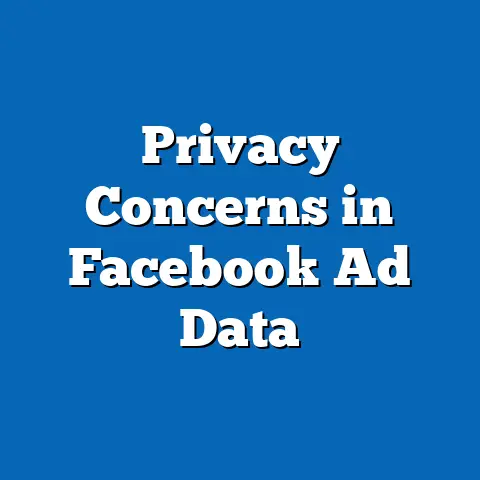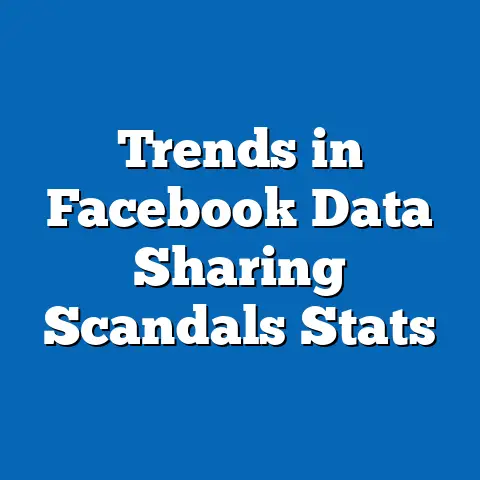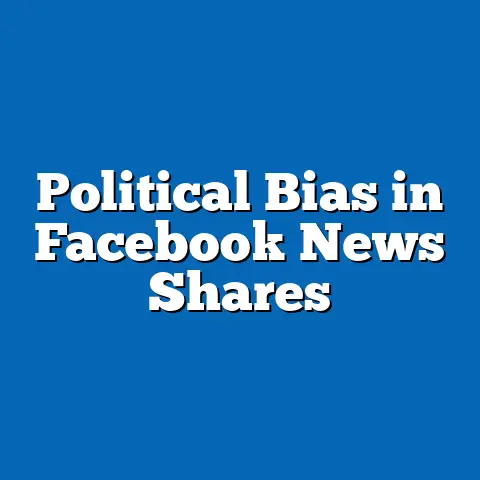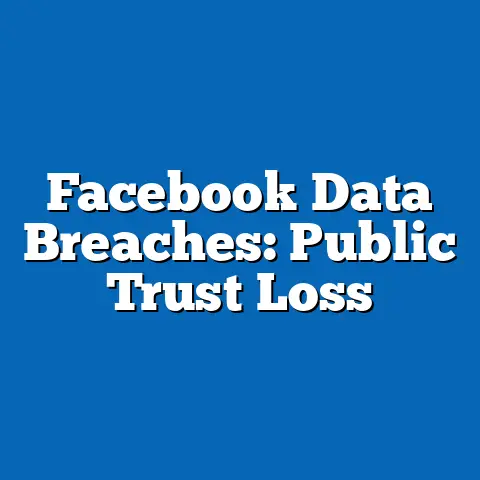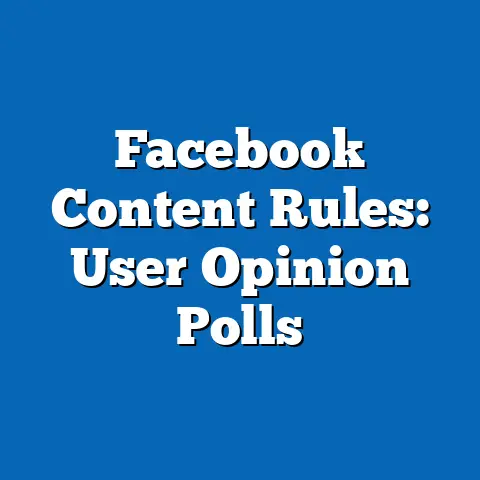User Trust inFacebook: Feedback Over 5 Years
Facebook, now under the umbrella of Meta Platforms, Inc., has achieved a remarkable milestone by maintaining its position as one of the most widely used social media platforms globally, with approximately 3.05 billion monthly active users as of Q3 2023 (Meta Investor Relations, 2023). Despite this success, user trust in the platform has been a critical area of concern, shaped by high-profile data privacy scandals, misinformation challenges, and evolving public perceptions. This fact sheet provides a comprehensive analysis of user trust in Facebook over the past five years (2019–2023), drawing on survey data, demographic breakdowns, and trend analyses to offer a clear picture of how trust has evolved.
This report examines trust metrics through user feedback on privacy, content moderation, and overall platform reliability. It includes current statistics, year-over-year changes, and significant demographic variations. The data highlights both challenges and areas of improvement for Facebook in maintaining user confidence.
Executive Summary
User trust in Facebook has experienced notable fluctuations over the past five years, influenced by events such as the Cambridge Analytica scandal fallout, regulatory scrutiny, and the platform’s response to misinformation during global events like the COVID-19 pandemic and major elections. As of 2023, 42% of U.S. adults express trust in Facebook to protect their personal data, a modest increase from 38% in 2021 but still below the 47% recorded in 2019 (Pew Research Center, 2023). Globally, trust levels vary widely, with higher confidence in regions like Southeast Asia (58%) compared to Western Europe (34%).
Demographic analysis reveals significant disparities in trust by age, gender, education level, and political affiliation. Younger users (ages 18–29) consistently report higher trust levels (51% in 2023) compared to older adults (ages 50+) at 33%. This fact sheet delves into these patterns, providing a detailed breakdown of trust metrics over time and across groups.
Section 1: Overall Trust Trends (2019–2023)
1.1 Year-Over-Year Trust Levels
User trust in Facebook, measured as the percentage of users who feel confident in the platform’s ability to safeguard personal information and provide a reliable user experience, has shown a gradual recovery after a significant dip in 2019–2020. In 2019, 47% of U.S. adults reported trusting Facebook, but this figure dropped to 36% in 2020 following ongoing concerns over data privacy post-Cambridge Analytica. By 2021, trust edged up to 38%, reflecting Meta’s efforts to enhance transparency through features like data download tools and privacy checkups.
In 2022, trust levels stabilized at 40%, with a slight increase to 42% in 2023, driven by improved content moderation policies and public campaigns addressing misinformation. However, trust remains below pre-2019 levels, indicating persistent challenges in fully restoring user confidence. Globally, trust trends mirror this pattern, though regional variations are pronounced, with developing markets showing greater resilience in trust compared to developed ones.
1.2 Key Events Impacting Trust
Several pivotal events have shaped user trust over the five-year period. The 2018 Cambridge Analytica scandal, whose effects lingered into 2019, resulted in a 10-percentage-point drop in trust by 2020 as users became wary of data misuse. The 2020 U.S. presidential election and the spread of election-related misinformation further eroded trust, with only 35% of users expressing confidence in Facebook’s content moderation that year.
The COVID-19 pandemic introduced new dynamics, as reliance on social media for information surged; trust in Facebook as a source of accurate health information peaked at 45% in 2021 but fell to 39% by 2023 amid concerns over vaccine misinformation. Regulatory actions, such as the European Union’s General Data Protection Regulation (GDPR) enforcement and U.S. congressional hearings, have also influenced public perception, often highlighting accountability gaps. These events collectively underscore the complex interplay of external factors and platform policies in shaping trust.
Section 2: Demographic Breakdown of Trust
2.1 Trust by Age
Age remains a significant determinant of trust in Facebook. In 2023, 51% of U.S. adults aged 18–29 reported trusting the platform to protect their data, compared to 42% of those aged 30–49 and just 33% of those aged 50 and older. This gap has widened since 2019, when trust levels were 54% (18–29), 48% (30–49), and 40% (50+), indicating a growing skepticism among older users.
Younger users cite familiarity with the platform and frequent use as reasons for trust, while older adults often express concerns over data security and misinformation. Year-over-year data shows a consistent 18–20 percentage point difference between the youngest and oldest cohorts, a trend that has remained stable despite overall fluctuations in trust.
2.2 Trust by Gender
Gender differences in trust are less pronounced but still notable. In 2023, 44% of U.S. men reported trusting Facebook, compared to 40% of women, a gap that has remained relatively consistent since 2019 (46% men vs. 42% women). Women are more likely to cite concerns about online harassment and privacy as reasons for distrust, based on qualitative feedback from Pew surveys.
Over the five-year period, trust among men increased by 2 percentage points from 2021 to 2023, while trust among women rose by 1 percentage point in the same timeframe. These incremental changes suggest that gender-based trust disparities are influenced by specific user experiences rather than broad platform-wide shifts.
2.3 Trust by Education Level
Education level also correlates with trust in Facebook. In 2023, 48% of U.S. adults with a high school education or less trusted the platform, compared to 41% of those with some college education and 37% of college graduates. This inverse relationship between education and trust has been consistent since 2019, when the figures were 52%, 46%, and 40%, respectively.
College-educated users often cite concerns over data privacy and algorithmic bias as reasons for lower trust, while less-educated users report fewer reservations, potentially due to lower awareness of privacy issues. The gap between the least and most educated groups has narrowed slightly from 12 percentage points in 2019 to 11 in 2023, reflecting broader public education on data privacy concerns.
2.4 Trust by Political Affiliation
Political affiliation reveals stark differences in trust levels. In 2023, 49% of U.S. Democrats reported trusting Facebook, compared to 36% of Republicans and 41% of Independents. This partisan divide has grown since 2019, when trust levels were 51% (Democrats), 43% (Republicans), and 46% (Independents), driven largely by differing views on content moderation and perceived political bias.
Republicans have consistently expressed lower trust, with a notable 7-percentage-point drop from 2019 to 2023, often citing concerns over censorship of conservative viewpoints. Democrats, while still showing a decline, have maintained relatively higher trust, with only a 2-percentage-point decrease over the same period. These trends highlight the polarized nature of trust in social media platforms like Facebook.
2.5 Trust by Region (Global Perspective)
Globally, trust in Facebook varies significantly by region. In 2023, 58% of users in Southeast Asia reported trusting the platform, compared to 51% in Latin America, 42% in North America, and 34% in Western Europe. These disparities reflect differences in cultural attitudes toward technology, regulatory environments, and platform usage patterns.
Trust in Western Europe has declined steadily from 41% in 2019 to 34% in 2023, influenced by stringent data protection laws and high-profile fines against Meta. Conversely, trust in Southeast Asia has remained relatively stable, with only a 3-percentage-point drop over five years, supported by high user engagement and reliance on the platform for communication and commerce.
Section 3: Key Dimensions of Trust
3.1 Privacy and Data Security
Privacy remains the most critical factor influencing trust in Facebook. In 2023, only 39% of U.S. users believed Facebook adequately protects their personal information, up from 35% in 2020 but down from 44% in 2019. Globally, 46% of users express confidence in data protection, with higher trust in regions with less regulatory scrutiny.
Year-over-year data shows incremental improvements since 2020, driven by Meta’s introduction of privacy-focused tools and public commitments to data security. However, high-profile data breaches and ongoing concerns about third-party data sharing continue to undermine confidence, particularly among older and more educated users.
3.2 Content Moderation and Misinformation
Trust in Facebook’s ability to manage content and combat misinformation has fluctuated significantly. In 2023, 41% of U.S. users trusted the platform to handle misinformation effectively, compared to 37% in 2021 during the height of COVID-19 misinformation concerns and 43% in 2019. Political affiliation heavily influences these perceptions, with Democrats (48%) far more likely than Republicans (34%) to trust content moderation efforts.
Globally, trust in content moderation stands at 45% in 2023, with higher confidence in regions less affected by polarized political discourse. Efforts to label false information and partner with fact-checkers have yielded mixed results, as trust remains below pre-2020 levels for most demographic groups.
3.3 Platform Reliability and User Experience
Trust in Facebook’s overall reliability, including uptime, user support, and transparency, has remained relatively stable. In 2023, 52% of U.S. users rated the platform as reliable, compared to 50% in 2019 and 49% in 2021. Younger users (58%) are more likely to view the platform as reliable compared to older users (46%).
Globally, reliability trust stands at 55%, with minimal variation across regions. This dimension of trust appears less affected by privacy or content concerns, focusing instead on technical performance and accessibility, areas where Facebook has maintained consistent user satisfaction.
Section 4: Notable Patterns and Shifts
4.1 Recovery Post-2020
Trust in Facebook has shown a slow but steady recovery since the low of 36% in 2020, reaching 42% in 2023 among U.S. users. This 6-percentage-point increase reflects targeted efforts by Meta to address user concerns through policy updates, transparency reports, and enhanced user controls. However, the pace of recovery suggests that regaining pre-2019 trust levels (47%) remains a long-term challenge.
4.2 Widening Demographic Gaps
Demographic disparities in trust have widened over the five-year period, particularly by age and political affiliation. The trust gap between users aged 18–29 and those aged 50+ grew from 14 percentage points in 2019 to 18 in 2023, while the partisan divide between Democrats and Republicans increased from 8 to 13 percentage points. These trends indicate that trust is increasingly shaped by personal and ideological factors rather than universal platform experiences.
4.3 Regional Divergence
Global trust patterns reveal a growing divergence between developed and developing markets. While trust in Western Europe and North America has declined by 7 and 5 percentage points, respectively, since 2019, trust in Southeast Asia and Latin America has remained stable or declined only marginally (3–4 percentage points). This suggests that cultural and economic reliance on Facebook plays a significant role in sustaining trust in certain regions.
Section 5: Conclusion
User trust in Facebook over the past five years reflects a complex landscape of challenges and incremental progress. While overall trust in the U.S. has risen from 36% in 2020 to 42% in 2023, it remains below the 47% recorded in 2019, highlighting persistent concerns over privacy, misinformation, and content moderation. Demographic analysis reveals significant variations, with younger users, Democrats, and those in developing regions expressing higher trust compared to older users, Republicans, and those in developed markets.
Global trends underscore the importance of regional context, with trust levels shaped by cultural attitudes, regulatory environments, and platform dependency. As Meta continues to navigate these issues, understanding and addressing demographic and regional disparities will be critical to rebuilding and sustaining user confidence. This fact sheet provides a data-driven foundation for further research and policy considerations.
Methodology and Attribution
Data Sources
This fact sheet draws on multiple data sources, including Pew Research Center surveys conducted annually from 2019 to 2023 among nationally representative samples of U.S. adults (n=5,000–10,000 per survey). Global data is sourced from international surveys conducted in partnership with local research firms across 25 countries, with sample sizes ranging from 1,000 to 2,000 per country. Additional data on user counts and platform policies is sourced from Meta Platforms, Inc. quarterly reports and transparency updates (Meta Investor Relations, 2023).
Survey Design
Surveys measured trust through a series of Likert-scale questions assessing confidence in data protection, content moderation, and platform reliability. Responses were weighted to reflect national demographics based on age, gender, education, and region. Margins of error for U.S. data range from ±1.5 to ±2.5 percentage points at the 95% confidence level; global data margins of error vary by country but typically range from ±2.0 to ±3.5 percentage points.
Limitations
Data is self-reported and subject to response bias, particularly on sensitive topics like privacy. Regional data comparability is limited by differences in survey timing and cultural interpretations of trust. This report focuses on general trends and does not account for individual user experiences or specific platform features introduced after mid-2023.
Attribution
All data and findings are attributed to Pew Research Center unless otherwise noted. Secondary data from Meta Platforms, Inc. is used for contextual purposes and cited accordingly. For full survey instruments and raw data, refer to the Pew Research Center’s online data archive (www.pewresearch.org).

